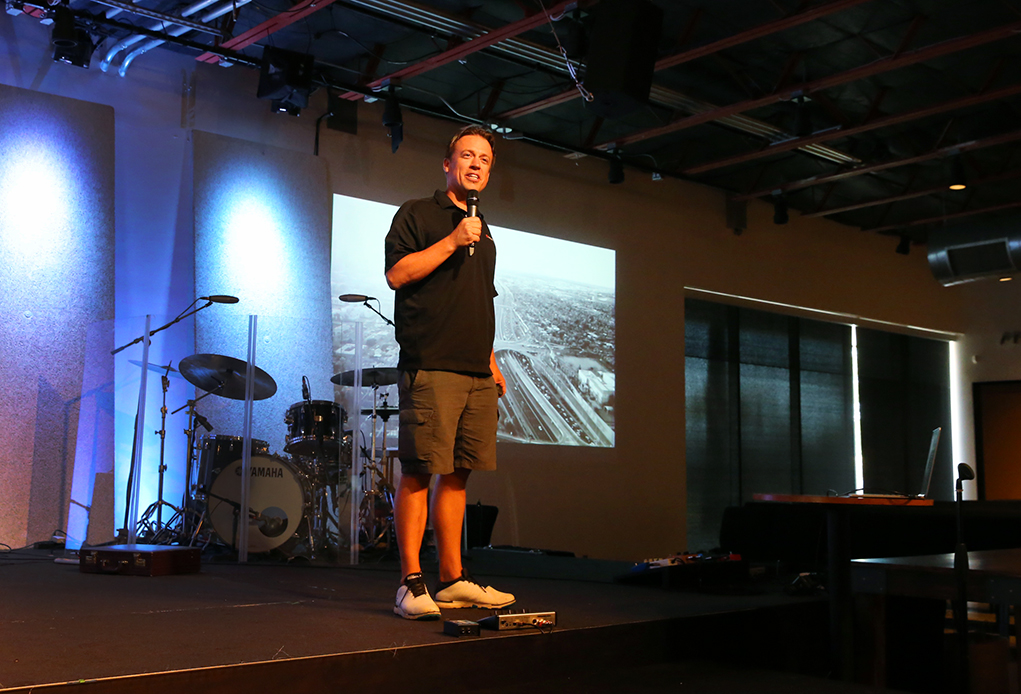By Grace Usher
For storm chasers and those obsessed by weather patterns and such, the 2018 Monsoon Convention in Phoenix was the place to be this weekend.
This annual convention highlights the history, science and latest updates of the storm chasing world.
“Monsoon Con” is coordinated and presented by Trey Greenwood and Adriana Mozeris of Mad Wx Chasing.
“This is the fifth Mon Con. It was started in 2014 as Arizona Chaser Con.” Greenwood said.
A monsoon is distinguished by a short, typically 30-minute surge of high winds, rain and dust. The storm is short-lived but may come in multiple surges.
“A monsoon is a seasonal change in wind direction from the west to the south or southeast. That brings moisture to the area and storms as a result. Arizona is the most notable area for the monsoon but it also affects Southern California, Southern Utah, Southern Colorado, New Mexico and West Texas at times,” Greenwood said.
They chose the Phoenix area for the convention to connect and educate the Southwest chasing community.
This year also featured nationally recognized storm chasers from all around the country. The event was held at New City Church.
The the speakers included storm chasers and photographers John Sirlin and Mike Olinski who spoke about their experience storm chasing and photos of their chases.
Olbinski also discussed the “big regret” all storm chasers experience when they miss a storm and how to combat feelings of devastation.
Ken Waters, a warning coordinator of the National Weather Society of Phoenix, spoke about the monsoons of Arizona. He discussed how the National Weather Society keeps individuals aware and safe during monsoons.
“There are 107 days in the monsoon … from June 15 to September 30. The old rule to tell if the monsoon has began is a a daily average dew point of 55 degrees or higher for three consecutive days,” Waters explained.
The latest update in weather warning technology is the polygon warning. Currently used for haboob (dust storm) warnings in the Phoenix and surrounding areas, the new alert technology focuses the alert system to a smaller radius of the detected storm so that people can be better prepared for when storms may hit.
There are four National Weather Service Stations in Arizona.
Following are some of the weather-related links mentioned during Ken Waters’ presentation:
National Weather Society Weather Tracker
High resolution ensemble forecast
GOES- Primary Weather Satellite
Tim Marshall is a meteorologist and structural engineer. He has been a storm enthusiast since the early 1970s. He is considered a legend in the storm-chasing community. He was the second publisher for “Storm Track” magazine.
Tim Marshall was approached in the 1990s by some producers working on the movie “Twister.” He did not accept the invitation to work on the film; however he attended the opening premiere. Marshall was also featured on two episodes of the “Oprah Winfrey Show.”
He has chased hundreds of storms. Although not a storm, his most recent adventure was photographing of the erupting Kilauea volcano in Hawaii.
Marshall discussed the history of storm chasing which dates back as early as 1950. He referred to David Hoadley who was the first recognized storm chaser, and the first ever to film a tornado, which he captured in 1958. Hoadley also began “Storm Track” magazine which Marshall later took over.
“Extreme Meteorologist” Reed Timmer rounded out the speaking roster. Timmer is best known for starring in the former Discovery Channel show, “Storm Chasers.” Timmer started his storm chasing at a young age.
“When I was 16, I got my license and realized I didn’t have to wait for the storms to come to me,” Timmer said.
Timmer began the website, TornadoVideos.net, during his time in graduate school. He later received his PhD in Meteorology.
Timmer currently works for Accuweather as a storm videographer. He is currently working on a project called, “2019 Science Mission” in which he hopes to implement new probe technology to understand the patterns and behaviors of tornadoes on a more precise level.

Reed Timmer speaks to a crowd at MonsoonCon in Phoenix, AZ on Saturday. Jillian Danielson/RiverScene
As far as monsoons, Timmer’s most recent was in Page, with David Rankin. Timmer comes to the Southwest for many monsoon seasons.
“It was incredible, even just that small flood, the debris on the front end was just so powerful. How it went from a distance storm with a really tall updraft to producing a flood and having such a severe impact so far away from the storm was just astounding. They were so beautiful,” he said.
Timmer said monsoons in Arizona are particularly unique because of their tall updrafts and the cloud bases are typically higher, making them more photogenic for chaser enthusiasts. The increased sunlight also brings more definition. The haboob dust storms are very distinct to the area as well.
“Forecasting them for me is difficult because you have to know to Orography of the mountains all around. [Monsoons] are more spontaneous, they depend more on the terrain than the atmosphere. They will develop to be extremely intense and collapse within a matter of minutes so you have to be at the perfect position and constantly adjust.”
For more information on Monsoon Convention, click here.




















No Comments » Comments: